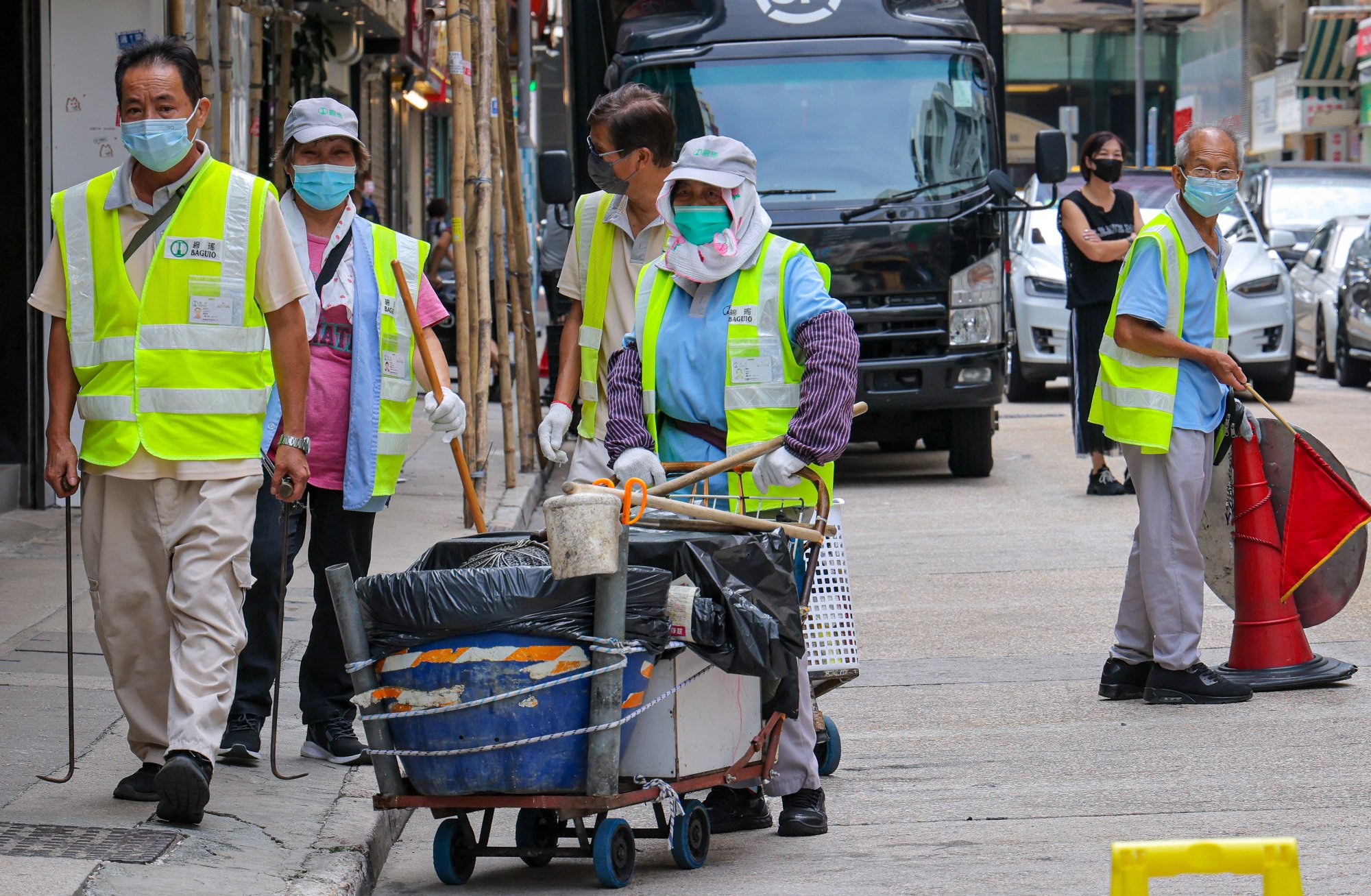
Hong Kong team develops AI-equipped trolley to ease strain on workers
- Users of electronic power-assisted trolley can manoeuvre it fully loaded as if it were empty by simply holding onto its handlebar,
- Project receives HK$6.45 million in funding under Innovation and Technology Fund
Users of the electronic power-assisted trolley can manoeuvre it fully loaded as if it were empty by simply holding onto its handlebar, according to researchers from the Logistics and Supply Chain MultiTech R&D Centre.
The trolley employs sensors to measure the pressure of the user’s grip on the handlebar, as well as an onboard AI controller to calculate the required torque – the twisting force that causes the rotation.
Two electric motors in the wheel then generate force to overcome the weight of the trolley, allowing users to steer a fully loaded vehicle with ease, according to researchers.

Researchers say their aim is to help workers handle heavy loads and reduce the risk of musculoskeletal disorders and work-related injuries.
The project received HK$6.45 million (US$825,066) from the Innovation and Technology Fund and won a gold medal at the 48th International Exhibition of Inventions in Geneva last year.
The prototype is being tested by a cleaning company, where it is helping staff transport tools for street-cleaning work.
The trolley is among multiple research projects being funded by the government’s InnoHK initiative, which set up 28 research centres focused on developing solutions for different industries.
The Innovation and Technology Commission would focus on providing funding for upstream and midstream research centres and universities in the coming year, according to its commissioner, Ivan Lee Kwok-bun.
Hong Kong-made espresso machines? Firms tap tech, eye funds for ‘smart’ shake-up
“If we want to build a complete innovation and technology ecosystem, converting the research endeavours from the upper stream into technical ideas in the midstream is very important,” he told a press briefing.
“But researchers must also show investors their potential and how their products can serve the market. The results of their research must materialise or else they will forever be stuck in a meaningless phase.”
Lee said the government’s Innovation and Technology Fund, set up in 1999, had provided HK$14 billion to more than 4,000 projects and the number of applications for grants, as well as the amount of funding given out, had increased significantly in recent years.
The number of applications jumped from 17,000 in 2022 to about 20,000 last year, while funding increased from HK$3.7 billion in 2022 to HK$5.6 billion last year.
Funding for private sector research projects rose from HK$660 million in 2019 to HK$1.75 billion last year.
Lee also revealed details about a proposed research institute in the Yuen Long InnoPark focused on third-generation semiconductors, first mentioned by Chief Executive John Lee Ka-chiu last year in his policy address.
“The building is complete, and the Hong Kong Science and Technology Park received the occupation permit at the end of last year,” he said. “We hope within this year, companies can start moving into the centre.”
Hong Kong copyright law change to cover artificial intelligence in pipeline
He added the Innovation, Technology and Industry Bureau would seek HK$2.84 billion in funding from the Legislative Council’s finance committee to establish the institute within the first half of this year, with a proposed HK$2.48 billion to be allocated for the construction of the city’s first two major pilot production lines.
“Many companies who find that their products have commercial potential have to conduct many tests, but we don’t have such resources in the city, so they have to go overseas, which increases costs,” he said.
“This centre will have facilities such as clean rooms and a chemical waste and sewage treatment system, unlike current industrial buildings.”
Secretary for Innovation and Technology Sun Dong first revealed plans to establish a microelectronics research institute in December, saying that the increase in mainland Chinese domestic production of third-generation semiconductor equipment would alleviate the potential impact of restrictions by the West.

